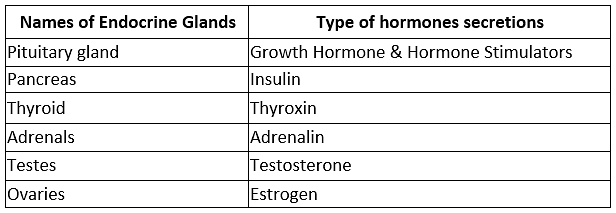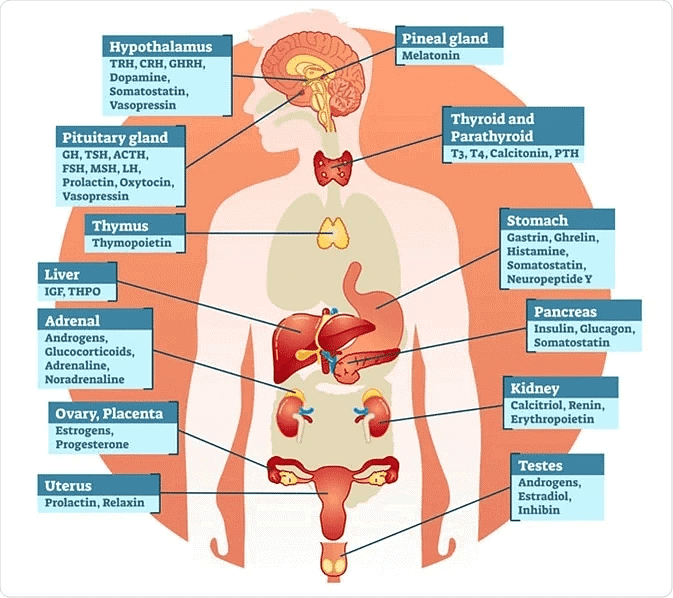NCERT Solutions for Class 8 Science Chapter 7 - Reaching the Age of Adolescence
"Reaching the Age of Adolescence" is a chapter in the Class 8 Science textbook that focuses on the physical and emotional changes that occur during puberty. Adolescence is a crucial time in the life of every individual, as it marks the transition from childhood to adulthood. Let's have a look at NCERT Solutions of this chapter.
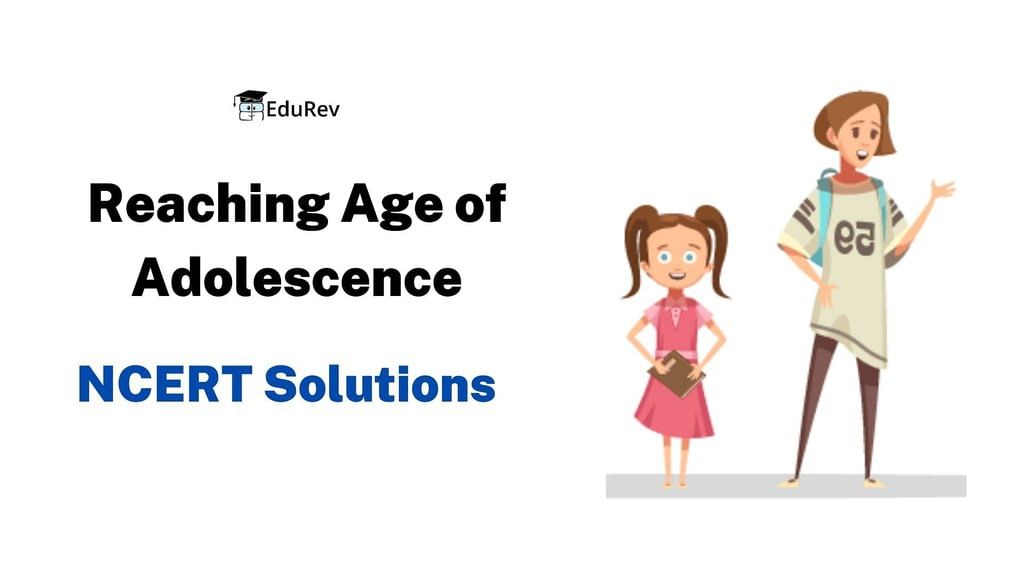
Q1: What is the term used for chemical secretions of endocrine glands responsible for changes taking place in the body?
Ans:
- The secretions of endocrine glands responsible for changes taking place in the body are called hormones.
- Hormones are chemical substances that are released by endocrine glands directly into the bloodstream.
- The changes which occur at the onset of puberty and adolescence are controlled by hormones.
Q2: Define adolescence.
Ans: The period of life when the body undergoes changes leading to reproductive maturity is called adolescence. Adolescence begins around the age of 11 and lasts up to 18 or 19 years of age.
Adolescence is marked by the onset of puberty, in which growth of the reproductive organs, changes in body size, changes in body height, changes in voice, etc., takes place.
Q3: What is menstruation? Explain.
Ans: In females, the reproductive phase starts at the onset of puberty around 10 to 12 years of age and continues till 40-45 years of age.
- During this period, One ovum matures and is released by one of the ovaries once in about 28 to 30 days.
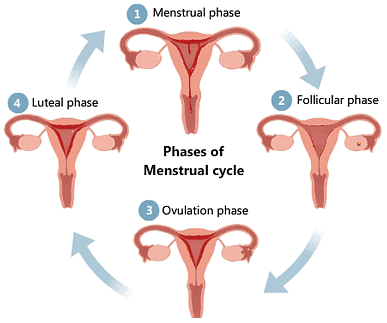
- During this period, the wall of the uterus becomes thick and prepares itself to receive the developing fertilized egg.
- In case there is no fertilization, the released egg and the thickened wall lining of the uterus, along with its blood vessels, break down and go out of the body.
- This periodic bleeding is due to the reproductive cycle in women, which is called menstruation.
Q4: List changes in the body that take place at puberty.
Ans: Following is the list of changes that take place in the body at puberty:
- Increase in Height: The most visible change during puberty is the sudden increase in body changes that take place at puberty.
- Change in Body Shape: The onset of puberty is marked by characteristic changes in body shape. In boys, the shoulders of boys generally broaden. In girls, the region below the waist becomes wider. In boys, the muscles of the body grow more prominently than in girls. Thus, changes occurring in adolescent boys and girls are different.

- Voice Change: At puberty, the voice box or the larynx begins to grow. Boys develop larger voice boxes than girls, resulting in girls having a high-pitched voice, whereas boys have a deep voice.
- Increased Activity of Sweat and Sebaceous Glands: During puberty, the secretion of sweat glands and sebaceous glands (oil glands) increases. Many young people get acne and pimples on the face at this time because of the increased activity of these glands in the skin.
- Development of Sex Organs: At puberty, male sex organs like the testes and penis develop completely. The testes also begin to produce sperm. In girls, the ovaries enlarge and eggs begin to mature. Also, ovaries start releasing mature eggs. During this period, changes in Secondary Sexual Characters resulted in the development of breasts in girls and the appearance of facial hair (moustache and beard) in boys.
- Reaching Mental, Intellectual and Emotional Maturity: Puberty is marked by the Adolescence stage, in which a person becomes more thoughtful, conscious, and independent than before.
Q5: Prepare a Table having two columns depicting the names of endocrine glands and hormones
secreted by them.
Ans:
Various Hormones released by Endocrine Glands
Q6: What are sex hormones? Why are they named so? State their function.
Ans:
- The hormones which help and control the formation of secondary sexual characters are called sex hormones.
- They are called sex hormones because they control sexual activities and help us to distinguish boys from girls.
- The sex hormones help to develop secondary sexual characters.
Example: In boys, they control the formation of sperm by testes and the growth of facial hair. In girls, they help to develop breasts, milk-secreting glands, or mammary glands.
Q7: Choose the correct option.
(a) Adolescents should be careful about what they eat because
(i) Proper diet develops their brains.
(ii) A proper diet is needed for the rapid growth taking place in their body.
(iii) Adolescents feel hungry all the time.
(iv) Taste buds are well-developed in teenagers.
Ans: (a) (ii) Adolescents should be careful about what they eat because a proper diet is needed for the rapid growth taking place in their bodies.
Adolescents should be careful about their diet because a proper diet is important for the development of their brains. During adolescence, the brain undergoes significant growth and development, and providing it with essential nutrients through a proper diet supports its optimal functioning.
(b) Reproductive age in women starts when their
(i) Menstruation starts.
(ii) Breasts start developing.
(iii) Bodyweight increases.
(iv) Height increases.
b) (i) Reproductive age in women starts when their menstruation starts.
The reproductive age for women typically starts with the onset of menstruation. Menstruation marks the beginning of the menstrual cycle and signifies the readiness of the reproductive system for potential pregnancy.
(c) The right meal for adolescents consists of
(i) Chips, noodles, coke.
(ii) Chapati, dal, vegetables.
(iii) Rice, noodles, and burger.
(iv) Vegetable cutlets, chips, and lemon drinks.
(c) (ii) The right meal for adolescents consists of chapati, dal, and vegetables.
The right meal for adolescents should include a balanced combination of foods that provide essential nutrients for their growth and development. Chapati (a type of flatbread), dal (lentils), and vegetables offer a nutritious meal with carbohydrates, proteins, fiber, vitamins, and minerals, making it a suitable choice for adolescents.
Q8: Write notes on
(a) Adam’s apple.
(b) Secondary sexual characters.
(c) Sex determination in the unborn baby.
Ans:
(a) Adam’s apple:
- At puberty, the voice box or the larynx begins to grow.
- Boys develop larger voice boxes than girls. Due to this, girls generally have a high-pitched voice, whereas boys have a deep voice.
- The growing voice box in boys, which is visible as a protruding part of the throat, is called Adam’s apple.

(b) Secondary sexual characters:
- During the onset of puberty in human beings, apart from the growth of reproductive organs such as testes and ovaries in males and females.
- There are other apparent visible changes, which are distinct in males and females and can be noticed upon seeing.
- In girls, breasts begin to develop at puberty, and boys begin to grow facial hair, like moustaches and beards.
- All these features, which help to distinguish the male from the female, are called secondary sexual characters.
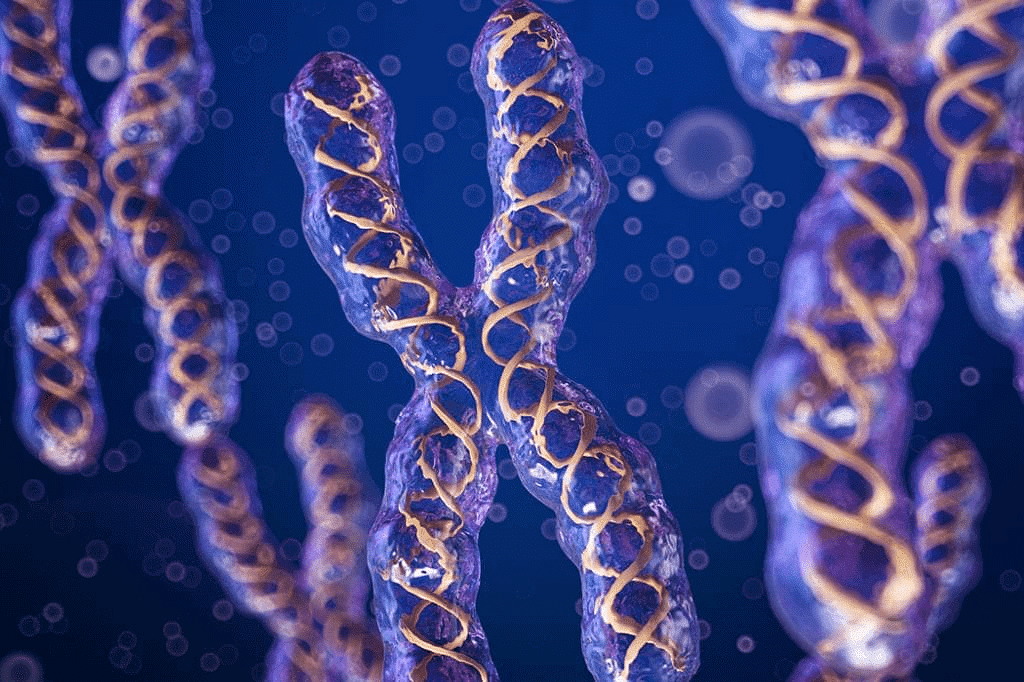 Chromosome(c) Sex determination in the unborn baby:
Chromosome(c) Sex determination in the unborn baby:
- The thread-like structures and chromosomes present inside a fertilized egg or zygote are the embedded instructions for determining the sex of the baby.
- All human beings have 23 pairs of chromosomes in the nuclei of their cells. Two chromosomes out of these are the sex chromosomes, named X and Y.
- A female has two X chromosomes, while a male has one X and one Y chromosome.
- The gametes (egg and sperm) have only one set of chromosomes.
- The unfertilized egg always has one X chromosome.
- When a sperm containing X chromosome fertilizes the egg, the zygote would have two X chromosomes and develop into a female child.
- If the sperm contributes a Y chromosome to the egg (ovum) at fertilization, the zygote will develop into a male child.

Q9. Word game: Use the clues to work out the words.
Across:
3. Protruding voice box in boys
4. Glands without ducts
7. Endocrine gland attached to brain
8. Secretion of endocrine glands
9. Pancreatic hormone
10. Female hormone
Down:
1. Male hormone
2. Secretes thyroxine
3. Another term for teenage
5. Hormone reaches here through blood stream
6. Voice box
7. Term for changes at adolescence

Ans:
Across:
3. Adam’s apple
4. Endocrine
7. Pituitary
8. Hormone
9. Insulin
10. Estrogen
Down:
1. Testosterone
2. Thyroid
3. Adolescence
5. Target site
6. Larynx
7. Puberty
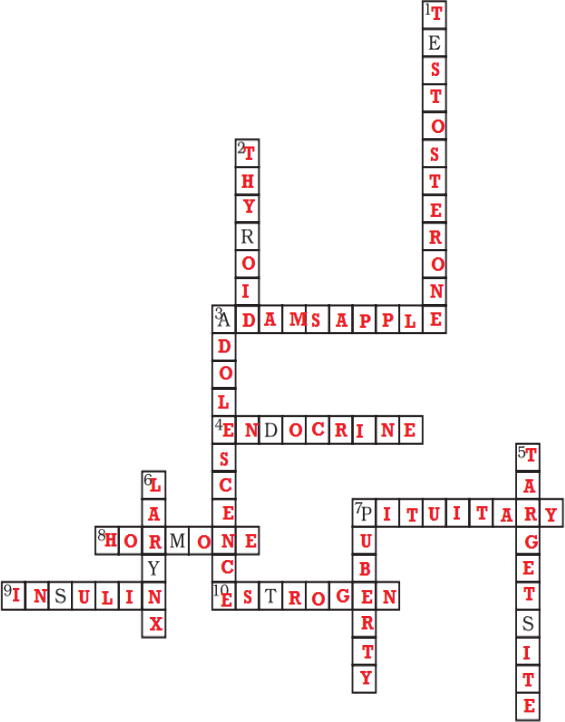
Q10. The table below shows the data on likely heights of boys and girls as they grow in age. Draw graphs showing height and age for both boys and girls on the same graph paper. What conclusions can be drawn from these graphs?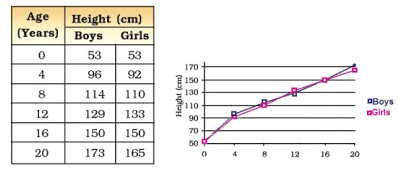 Ans:
Ans:
- At the time of birth, the height of the boys and girls are identical.
- From the time of birth, till the age of 8 years, The height of boys grows slightly more than girls.
- After the age of 8 years, the height of girls outpaces the height of boys till the age of 12 years.
- After the age of 12 years, the height of boys increases at a slightly faster rate and becomes almost equal to that of girls in the 16th year.
- After the 16th year, the boys continued to grow more in height till the age of 20 years.
Frequently Asked Questions (FAQs) Related to Reaching Age of Adolescence
Q.1. What is Adolescence?
Ans: Adolescence is a transitional period between childhood and adulthood, during which significant physical, emotional, and cognitive changes occur in individuals.
Q.2. What are the physical changes that occur during adolescence?
Ans: During adolescence, individuals experience a growth spurt, changes in body shape and size, development of sexual organs, and the onset of menstruation in girls.
Q.3. What are the emotional changes that occur during adolescence?
Ans: Adolescents experience a range of emotions as they navigate through this period of life, including mood swings, increased self-awareness, and a desire for independence and autonomy.
Q.4. What is puberty and when does it occur?
Ans: Puberty is the period during which individuals become capable of sexual reproduction. It usually occurs between the ages of 8 and 13 for girls, and between 9 and 14 for boys.
Q.5. How can parents and caregivers support adolescents during this time?
Ans: Parents and caregivers can support adolescents by providing a supportive and non-judgmental environment, fostering open communication, and helping them navigate the challenges of adolescence, such as peer pressure and changes in self-identity. They can also encourage healthy habits, such as regular exercise and a balanced diet, and provide access to healthcare resources.
|
90 videos|273 docs|44 tests
|

